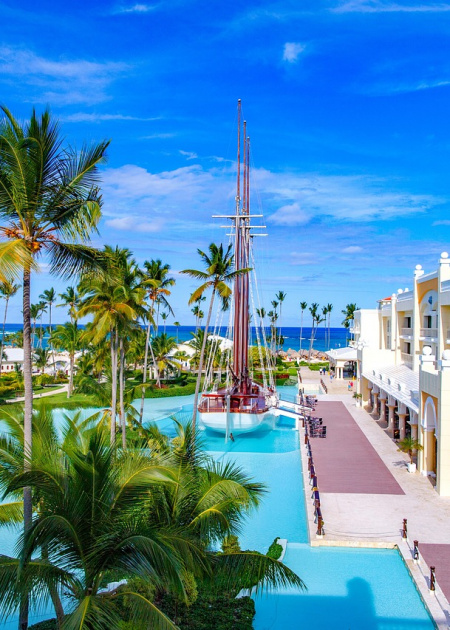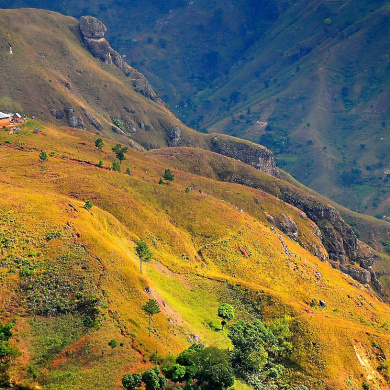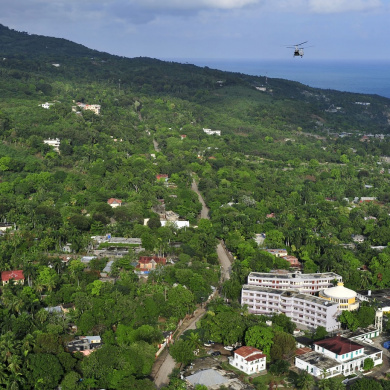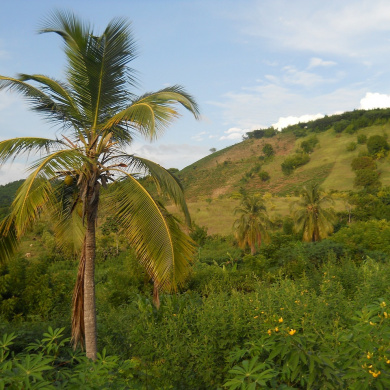Why travel to
Haiti is an incredibly diverse destination with something to offer travelers of all interests. From lush rainforest hikes and spectacular white-sand beaches to its vibrant culture, incredible history, colorful cuisine, and its friendly locals, Haiti is a truly unforgettable destination. Travelers will be enchanted by the remarkable sight of the Citadelle La Ferrière and the Unesco-listed Citadel, and inspired by the powerful views of art and culture that make Haiti the beautiful, vibrant nation it is today. In addition, travelers will have the opportunity to part-take in a variety of activities like kayaking, zip lining, diving, horseback riding, and even swim with dolphins. Furthermore, the cost of living in Haiti is surprisingly low and there are plenty of comfortable hotels and resorts to choose from.
Cost of living
The cost of living in Haiti is relatively low, depending on the person's lifestyle and the location they choose to live in. Basic necessities like food, shelter, and transportation tend to be less expensive than many developed countries.
Safety
At this time, the U.S. Department of State recommends travelers avoid going to Haiti due to crime, civil unrest, and limited healthcare access. Additionally, the U.S. Embassy in Haiti has reduced its staffing due to security concerns.
Places to visit
- Citadelle Laferrière: Built in 1804, the Citadelle Laferrière is a mountaintop fortress situated near the northern town of Cap-Haïtien. Built under the orders of Haitian revolutionary leader Henri Christophe, the 10-story castle is one of the oldest, largest and best preserved fortresses in the Americas.
- Saut d’Eau Waterfall: Located near the small village of Ville-Bonheur in central Haiti, the Saut d’Eau is one of the most popular tourist attractions in the Haitian countryside. The waterfall is surrounded by lush vegetation and is a favourite swimming spot for locals and tourists alike.
- National Pantheon Museum: Located in Port-au-Prince, the National Pantheon Museum is an important cultural landmark and showcases the history of Haiti. The museum chronicles Haitian independence through artifacts, recordings and multimedia exhibitions.
- Jacmel: Situated on the southern coast of Haiti, charming Jacmel is known as the cultural capital of Haiti. The cobbled streets of Jacmel are filled with cozy cafes and colourful markets.
- Bassin Bleu (Blue Hole): Located just outside the city of Jacmel, the Bassin Bleu is an iconic Caribbean swimming spot that is a must-see for tourists. The lagoon consists of three separate deep pools connected by cascading waterfalls.
Food to try
- Griot (Deep-fried Pork): Griot is a traditional Haitian dish made from marinated pieces of pork that are deep-fried and served with a tomato-based sauce. It’s usually considered a party dish, as it makes a large, tasty entrée.
- Tassot (Goat Stew): This is another classic Haitian dish which consists of slow-cooked goat meat, served in a rich stew. It’s flavoured with garlic, onions, and spices, and served over steamed white rice.
- Pikliz (Spicy Pickled Veggies): An incredibly popular side dish in Haiti, Pikliz is a crunchy combination of pickled cabbage, carrots, onions, and scotch bonnet peppers. It’s a great accompaniment to a variety of dishes and adds some heat to any meal.
- Accra (Fish Fritters): Accra is a popular Haitian appetizer made from shredded salt cod that’s combined with a batter and deep-fried. It’s typically served with a dipping sauce, such as mayonnaise, for a flavorful start to any meal.
- Bananes Pesse (Ripe Banana Fritters): This is a popular snack or dessert dish in Haiti, made from overripe bananas which are mashed, mixed with a batter, and then deep-fried. The result is a nice, sweet treat to enjoy after a meal.
Souvenirs
- Haitian Flag Hat – a hat featuring the colours and flag of Haiti.
- Art Pieces – a variety of works of art from native Haitian artisans.
- Coconut Oil – is produced in Haiti and is known for its many healing and beauty uses.
- Haitian Rum – bottled in Haiti, this rum is produced with local ingredients and cane sugar.
- Live Herbs – containers of live herbs, including lemongrass, rosemary, and bay leaf, used in traditional Haitian dishes.
- Haitian Jewelry – made with stunning local stone, shells and coral, this jewelry is an exquisite reminder of Haiti.
- Papillon Coffee – Haitian coffee beans picked, roasted, and packaged in Haiti and shipped abroad in heart-shaped packages.
- Music CDs – a variety of Haitian music CDs featuring the many genres of music in Haiti.
- Coconut Rum Soap – produced with local ingredients and free of chemicals, this soap is popular for its natural cleaning and moisturizing properties.
- Wooden Masks – intricately carved masks in the traditional Vodou style, used in religious ceremonies and as beautiful decorations.




